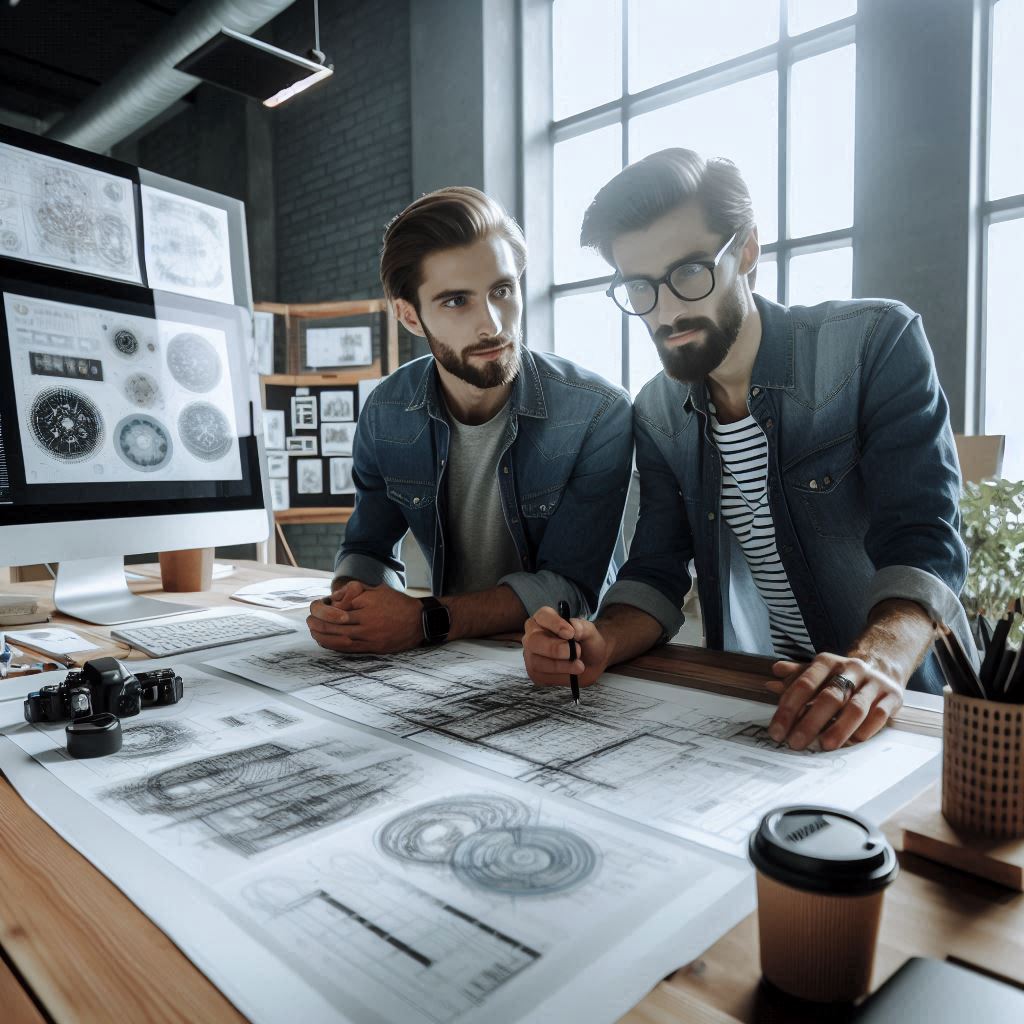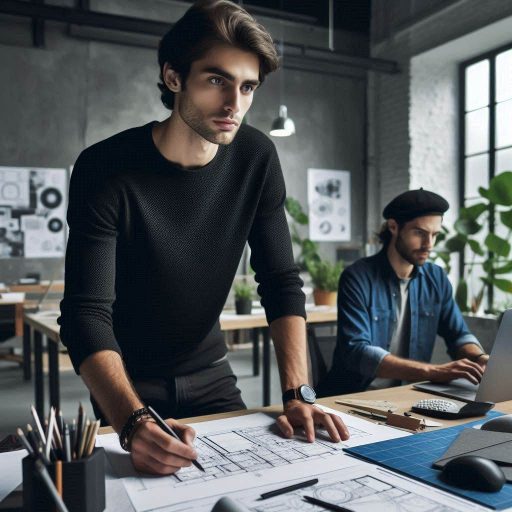Introduction
Exhibition design shapes the way people experience and interact with spaces.
It combines architecture, graphic design, and technology to communicate a message or tell a story.
Designers create immersive environments, guiding visitors through visual narratives that engage, inform, and inspire.
One crucial element that significantly impacts the overall experience is lighting.
Lighting is a powerful tool in exhibition design.
It does more than simply illuminate objects or spaces; it creates atmosphere, highlights key elements, and influences how visitors perceive and engage with the display.
Proper lighting can make or break an exhibition, as it directs attention, evokes emotions, and enhances the storytelling process.
In exhibitions, lighting sets the mood from the moment visitors enter the space.
Whether the goal is to create a warm, welcoming environment or a dramatic, thought-provoking scene, lighting plays a pivotal role in achieving this.
Designers carefully choose different types of lighting to match the tone and purpose of the exhibition.
Accent lighting is often used to emphasize specific objects or artworks.
It draws visitors’ eyes to particular details, allowing designers to guide the flow of the exhibit.
By spotlighting these focal points, accent lighting ensures that visitors don’t miss critical elements of the story or message being conveyed.
Setting the Mood
How Lighting Can Influence the Overall Mood and Atmosphere of an Exhibition
Lighting plays a crucial role in shaping the mood and atmosphere of any exhibition.
By adjusting brightness, color, and intensity, designers can craft unique experiences that resonate emotionally with visitors.
Whether aiming for a dramatic, calming, or energizing environment, lighting decisions directly affect how an audience perceives and engages with the space.
Different Types of Lighting Techniques That Can Be Used to Create Different Moods
One of the most effective ways to set the mood is through ambient lighting.
This technique provides general illumination across the exhibition, creating an inviting atmosphere.
Soft, warm tones often evoke feelings of comfort and relaxation, making the space feel welcoming and immersive.
On the other hand, brighter, cooler lights can create a crisp and modern atmosphere, encouraging visitors to focus on the details of the displays.
Accent lighting is another powerful tool for creating mood.
By focusing light on specific objects or areas, designers can draw attention to key elements of the exhibition.
For instance, spotlights can highlight a single piece of art or an important artifact, creating a sense of drama and importance.
This technique also adds depth and dimension to the space, guiding visitors’ eyes and shaping their emotional response to the exhibit.
Task lighting is primarily functional but can also influence mood.
Used in interactive or educational exhibits, it provides focused illumination for activities like reading or examining objects.
While its primary purpose is practical, task lighting can still be manipulated to create an engaging environment.
For example, softer lighting can make an educational display feel more intimate, while brighter light fosters a sense of excitement and discovery.
Color temperature also plays a key role in setting the mood.
Warm lighting, typically in shades of yellow or orange, evokes a cozy and relaxed feeling.
It works well in exhibits that aim to create a nostalgic or intimate atmosphere.
In contrast, cool lighting, often in shades of blue or white, gives a sense of modernity, cleanliness, and energy.
This lighting is ideal for futuristic exhibits or those focusing on innovation and technology.
Finally, dynamic lighting techniques add a layer of excitement and engagement.
By incorporating lighting that changes color, intensity, or movement, designers can create a highly immersive experience.
This type of lighting can simulate different times of day or environments, enhancing the narrative of the exhibition and further captivating the audience.
Essentially, lighting is a versatile tool in exhibition design.
With the right techniques, it not only illuminates but also shapes the overall mood and atmosphere, making the experience memorable.
Read: How to Create Memorable Characters: Pro Tips
Highlighting Key Elements
How lighting can be used to draw attention to specific exhibits or objects
Lighting plays a crucial role in drawing attention to specific exhibits or objects in exhibition design.
By using well-placed lighting, designers can focus the viewer’s gaze on the most important elements.
Proper lighting not only enhances visibility but also creates emphasis, guiding the audience through the space.
Strategic lighting placement can turn a standard display into a captivating experience.
Exhibits often contain multiple components, but not every element should receive equal attention.
By highlighting key objects, you ensure visitors focus on what matters most.
This selective illumination enhances the overall impact and directs visitors’ attention where needed.
For example, accent lighting works well for emphasizing artifacts, sculptures, or detailed designs.
By positioning a light source directly over or beside the key exhibit, the object stands out from the background.
The contrast between light and shadow creates a focal point, allowing viewers to engage more closely with the display.
Importance of strategic lighting placement in highlighting key elements
Spotlighting is another useful tool in drawing attention to specific pieces.
A focused beam of light zeroes in on an object, leaving surrounding areas in shadow.
This technique isolates the subject, making it the center of attention.
Spotlighting is effective in art galleries or museums, where individual objects or artworks need to shine on their own.
Track lighting offers flexibility when lighting key exhibits.
Designers can adjust the position and angle of each light source, ensuring the perfect focus on the exhibit.
This adaptability allows for precision in highlighting elements without over-lighting the space.
Track lighting is ideal for large exhibits that change over time or require flexible setups.
The color temperature of lighting also affects how key elements are perceived.
Cooler light tones, such as white or blue, create a modern and clinical effect.
Warmer tones, like yellow or amber, evoke warmth and intimacy.
Selecting the right color temperature enhances the storytelling of each exhibit, setting the right tone for the key elements.
Strategic lighting placement helps avoid overwhelming the viewer with too many distractions.
Overhead lighting or backlighting can highlight elements without drawing attention away from other parts of the exhibit.
Placing lighting at various heights and angles ensures that attention is naturally guided toward the exhibit’s focal points.
In general, lighting is more than just a tool for visibility in exhibition design.
It’s a powerful medium for highlighting key elements, ensuring they receive the attention they deserve.
Through careful placement and selection of lighting techniques, designers can enhance the impact of an exhibition, making each key element memorable and engaging.
Read: Ceramic Art Exhibitions to Visit in 2024
Creating Visual Interest
How Lighting Can Enhance the Visual Appeal of an Exhibition
Lighting plays a key role in enhancing the visual appeal of any exhibition.
It directs attention, creates focus, and highlights important elements.
By manipulating light, designers can transform an ordinary display into a captivating visual experience.
The right lighting choices add depth, contrast, and dimension, making exhibitions more engaging and immersive for visitors.
To create visual interest, lighting must go beyond mere illumination.
It can emphasize textures, highlight forms, and draw attention to specific features.
Through strategic lighting placement, designers can guide the audience’s gaze, leading them through the exhibition in a purposeful and compelling way.
For example, spotlights can be used to accentuate focal points, drawing attention to key exhibits.
Ways in Which Lighting Can Be Used to Create Depth, Contrast, and Visual Interest
Creating depth in an exhibition is another area where lighting excels.
Through a careful balance of light and shadow, designers can introduce a sense of dimensionality to otherwise flat displays.
By layering light sources at different intensities, it’s possible to generate a more dynamic and three-dimensional effect.
Backlighting, for instance, can add layers and create separation between objects, giving the viewer a more engaging experience.
Contrast is another powerful tool for enhancing visual appeal.
High-contrast lighting can create dramatic effects that immediately capture attention.
Using light and dark areas effectively can make objects appear more prominent and striking.
For example, a well-lit object in front of a dim background instantly stands out, offering a sense of intrigue and drawing the viewer closer.
Lighting also serves as an excellent way to create movement and flow within an exhibition space.
Changing light intensities, angles, and colors can add a sense of rhythm and motion.
Designers can use these techniques to lead visitors through different sections, encouraging them to explore further.
Dynamic lighting schemes—such as dimming or changing colors—can further enhance this sense of motion and visual interest.
In addition to movement, colored lighting can evoke emotion and set the tone of the exhibition.
Warm tones can make spaces feel cozy and inviting, while cool tones can create a sense of calm and professionalism.
Designers can experiment with colors to match the theme of the exhibition and guide visitor reactions.
In a nutshell, lighting is essential for creating visual interest in exhibitions.
By using light to enhance depth, contrast, and movement, designers can transform an exhibition into an immersive and visually engaging experience.
The careful manipulation of lighting not only enhances the aesthetic appeal but also guides the viewer’s attention, ensuring a memorable and impactful visit.
Read: Character Design Trends: What’s Hot in 2024?
Enhancing the Visitor Experience
Role of Lighting in Guiding Visitors Through an Exhibition Space
Lighting plays a crucial role in guiding visitors through an exhibition space.
It helps create pathways and highlights key areas.
Strategic lighting can direct attention to specific exhibits, ensuring visitors engage with important displays.
By using varying light levels, designers can create a sense of flow throughout the space.
Bright lights can energize and attract visitors, while softer lighting can encourage contemplation.
Using directional lighting can lead guests naturally from one exhibit to the next.
It creates a visual roadmap, making navigation intuitive.
When visitors feel guided, they can fully immerse themselves in the experience.
Incorporating colored lighting can also enhance the atmosphere.
Different colors evoke various emotions and moods.
For instance, warm tones can create a cozy feel, while cool colors can instill calmness.
By manipulating colors, designers can craft unique experiences that resonate with visitors.
How Lighting Can Create a More Immersive and Engaging Experience for Visitors
Lighting can transform the perception of space.
Brightly lit areas feel larger and more inviting.
Conversely, dimmed sections can create intimacy and intrigue.
This contrast encourages visitors to explore different aspects of the exhibition.
Engaging spaces lead to longer visits and deeper connections with the content.
Additionally, interactive lighting can foster engagement.
Using motion sensors can change lighting based on visitor movements.
This responsiveness captivates guests, making them active participants in the experience.
Such interactive elements encourage exploration and create memorable moments.
The role of lighting extends beyond aesthetics.
It can enhance storytelling by setting the scene.
Spotlighting specific artifacts can draw attention to their significance.
Using shadows can create drama and enhance narratives.
Well-planned lighting elevates the overall theme of the exhibition.
Effective lighting can also highlight information displays.
Illuminating text clearly ensures visitors can read and understand the content.
Proper lighting prevents frustration and enhances comprehension.
Visitors appreciate when they can easily access information without straining their eyes.
Furthermore, lighting can influence visitor behavior.
Bright, inviting spaces encourage exploration, while darker areas may promote quiet reflection.
Designers can use lighting to control the pace of movement throughout the exhibition.
This pacing allows for a more curated experience.
In the end, lighting significantly enhances the visitor experience in exhibition design.
It guides guests, creates immersive environments, and influences emotions.
Thoughtful lighting choices transform exhibitions into engaging, memorable experiences.
By prioritizing lighting, designers can elevate their exhibitions and captivate audiences.
Read: How to Price Your Ceramic Artwork

Incorporating Technology
One way to take exhibition design to the next level is by incorporating advanced lighting technologies.
These innovative tools can transform the entire ambiance of an exhibition space, creating a dynamic and engaging experience for visitors.
Here are some key ways in which technology can enhance the impact of lighting in exhibition design:
Use of advanced lighting technologies
Advancements in lighting technology have revolutionized the way exhibitions are designed and experienced.
LED lighting, for example, offers a wide range of color options, brightness levels, and energy efficiency.
This versatility allows designers to create customized lighting schemes that can be easily adapted to different exhibition themes and atmospheres.
Projections
Projection mapping is another powerful tool that can be used to create immersive and interactive experiences in exhibitions.
By projecting images, videos, and animations onto various surfaces, designers can transform static objects into dynamic forms that capture the attention of visitors.
This technique can be used to tell stories, showcase products, and create visually stunning displays that leave a lasting impression.
Interactive lighting
Interactive lighting systems enable visitors to actively engage with the exhibition space, turning passive observers into active participants.
These systems can respond to movement, touch, or sound, creating a sense of interactivity and playfulness that encourages exploration and discovery.
By incorporating interactive lighting elements, designers can create memorable experiences that resonate with visitors long after they leave the exhibition.
Incorporating technology into exhibition design opens up a world of creative possibilities.
Allowing designers to push the boundaries of traditional lighting techniques and create truly unique and unforgettable experiences for visitors.
By leveraging the power of LED lighting, projections, and interactive lighting.
Designers can enhance the overall impact of an exhibition and captivate audiences in new and exciting ways.
Sustainability and Energy Efficiency
Importance of Sustainable Lighting Practices in Exhibition Design
Sustainable lighting practices play a crucial role in modern exhibition design.
These practices not only reduce energy consumption but also minimize environmental impact.
Designers increasingly recognize the need for eco-friendly solutions.
Energy-efficient lighting enhances exhibits while aligning with sustainability goals.
Using LED lighting is one of the most effective ways to promote sustainability.
LEDs consume significantly less energy than traditional bulbs.
They also have a longer lifespan, reducing waste over time.
By choosing LEDs, designers can lower operational costs and carbon footprints.
Integrating smart lighting systems further enhances energy efficiency.
These systems adjust brightness based on ambient light levels.
They also allow for precise control over lighting schedules.
By using sensors, designers can ensure lights are only on when needed, saving energy.
Ways in Which Energy-Efficient Lighting Solutions Can Be Incorporated Without Compromising the Design Aesthetic
Incorporating natural light is another powerful strategy.
Designers can use skylights and large windows to harness daylight.
This approach reduces reliance on artificial lighting during daytime events.
Natural light not only enhances aesthetics but also creates a welcoming atmosphere.
Designers should also consider using dimmable lighting options.
Dimming lights allows for flexibility in mood and ambiance.
It enables the creation of different settings throughout the exhibition.
This adaptability supports energy conservation by allowing lower light levels when appropriate.
Moreover, selecting materials that enhance lighting efficiency is essential.
Reflective surfaces can amplify the effectiveness of lighting.
By using light-colored walls and surfaces, designers can create a brighter space with less energy.
This choice improves the overall impact of the exhibition.
Collaboration with lighting manufacturers can yield innovative solutions.
Designers should seek partnerships with companies specializing in sustainable lighting.
These collaborations can lead to customized solutions that meet both aesthetic and environmental goals.
Educating exhibitors about sustainable lighting options is vital.
Designers can provide resources that explain the benefits of energy-efficient solutions.
This knowledge empowers exhibitors to make informed decisions about their lighting choices.
Ultimately, sustainable lighting practices can enhance the exhibition experience.
By prioritizing energy efficiency, designers contribute to a healthier planet.
They also set an example for others in the industry.
By embracing sustainable solutions, they can create impactful, visually stunning exhibits that resonate with visitors.
In fact, integrating sustainable lighting practices in exhibition design is imperative.
Designers must explore innovative ways to incorporate energy-efficient solutions.
This commitment not only enhances the aesthetic appeal but also supports a sustainable future.
By focusing on sustainability, exhibition designers can create experiences that are both memorable and responsible.
Conclusion
Lighting plays a vital role in exhibition design.
It shapes how visitors experience a space.
Effective lighting enhances exhibits and guides visitor attention.
It sets the mood and creates a welcoming atmosphere.
By using light strategically, designers can evoke emotions and tell compelling stories.
Throughout this blog, we explored various aspects of lighting in exhibitions.
We discussed how lighting affects mood and atmosphere.
We also examined techniques to highlight key elements of an exhibit.
Well-placed lighting can draw attention to specific artworks or displays.
It can transform a simple space into an engaging experience.
Moreover, the right lighting can enhance visual appeal.
It can make colors pop and textures stand out.
Bright, focused lights can create excitement and energy.
Softer, dimmer lights can foster intimacy and reflection.
Designers must choose lighting styles that align with the exhibition’s theme and goals.
Collaboration between lighting designers and exhibition curators is essential.
Together, they can create a cohesive visual narrative.
Each lighting choice should support the overall message of the exhibition.
When lighting aligns with content, it enhances the visitor experience.
Additionally, technological advancements offer new possibilities for lighting design.
LED technology provides versatility and energy efficiency.
Designers can control brightness and color temperature easily.
Smart lighting systems allow for dynamic changes throughout the exhibition.
This adaptability can keep the experience fresh for repeat visitors.
Transform Your Career Today
Unlock a personalized career strategy that drives real results. Get tailored advice and a roadmap designed just for you.
Start Now[E-Books for Sale]
The Big Book of 500 High-Paying Jobs in America: Unlock Your Earning Potential
$19.99 • 500 High-Paying Jobs • 330 pages
Explore 500 high-paying jobs in America and learn how to boost your career, earn more, and achieve success!
See All 500 High-Paying Jobs of this E-Book
1001 Professions Without a Degree: High-Paying American Jobs You Can Start Now
$19.99 • 1001 Professions Without a Degree • 174 pages
Discover 1001 high-paying jobs without a degree! Unlock career tips, skills, and success strategies for just $19.99!




